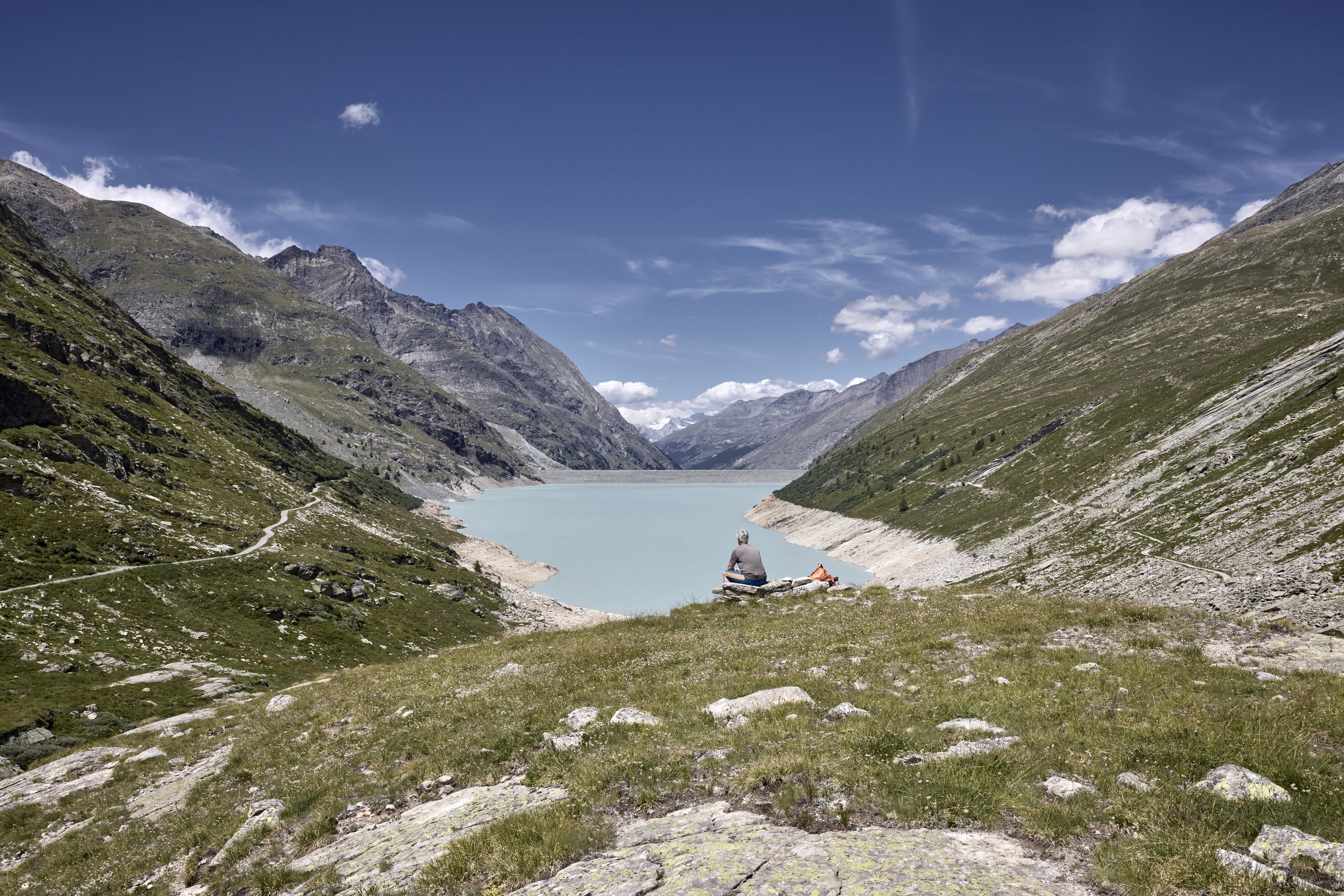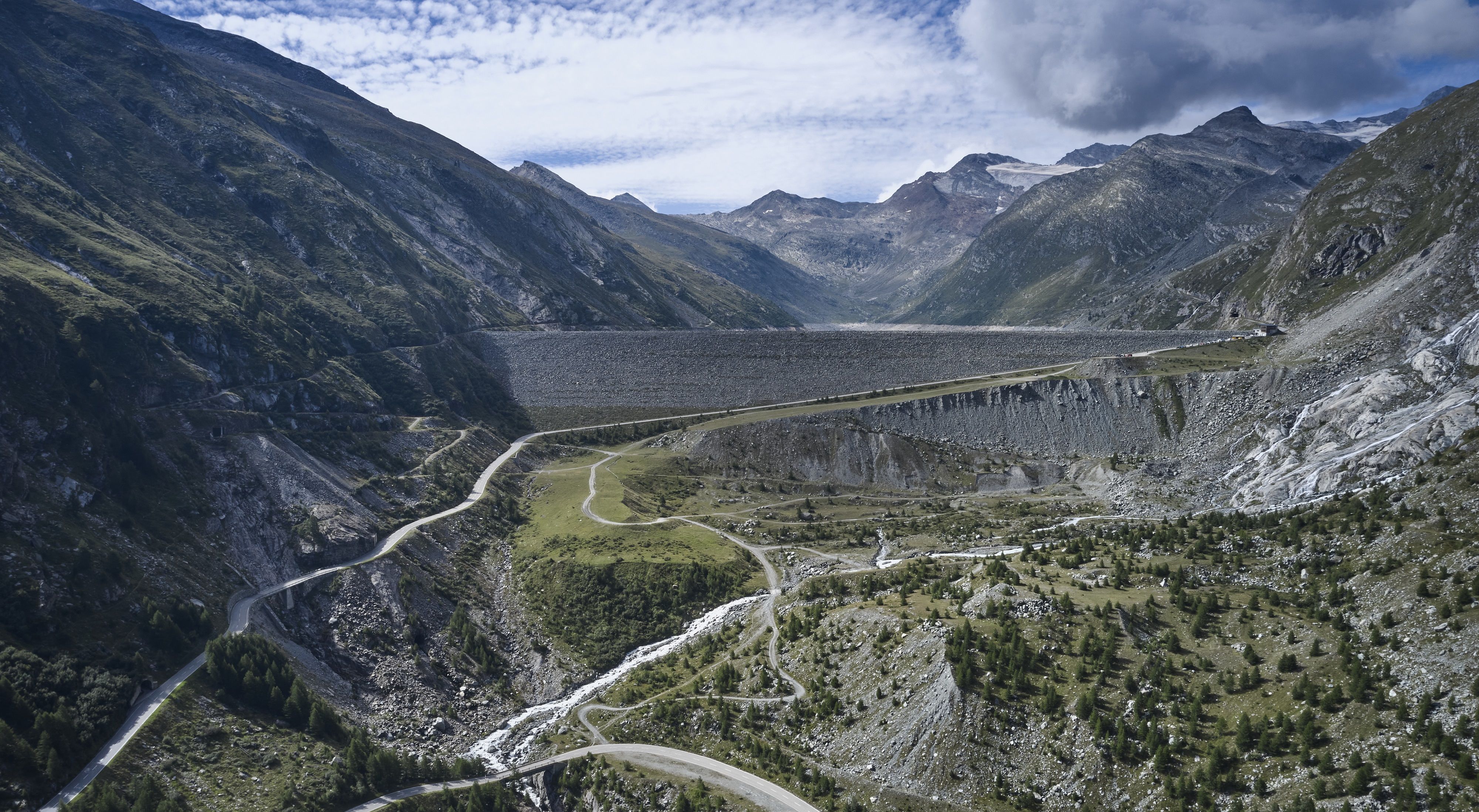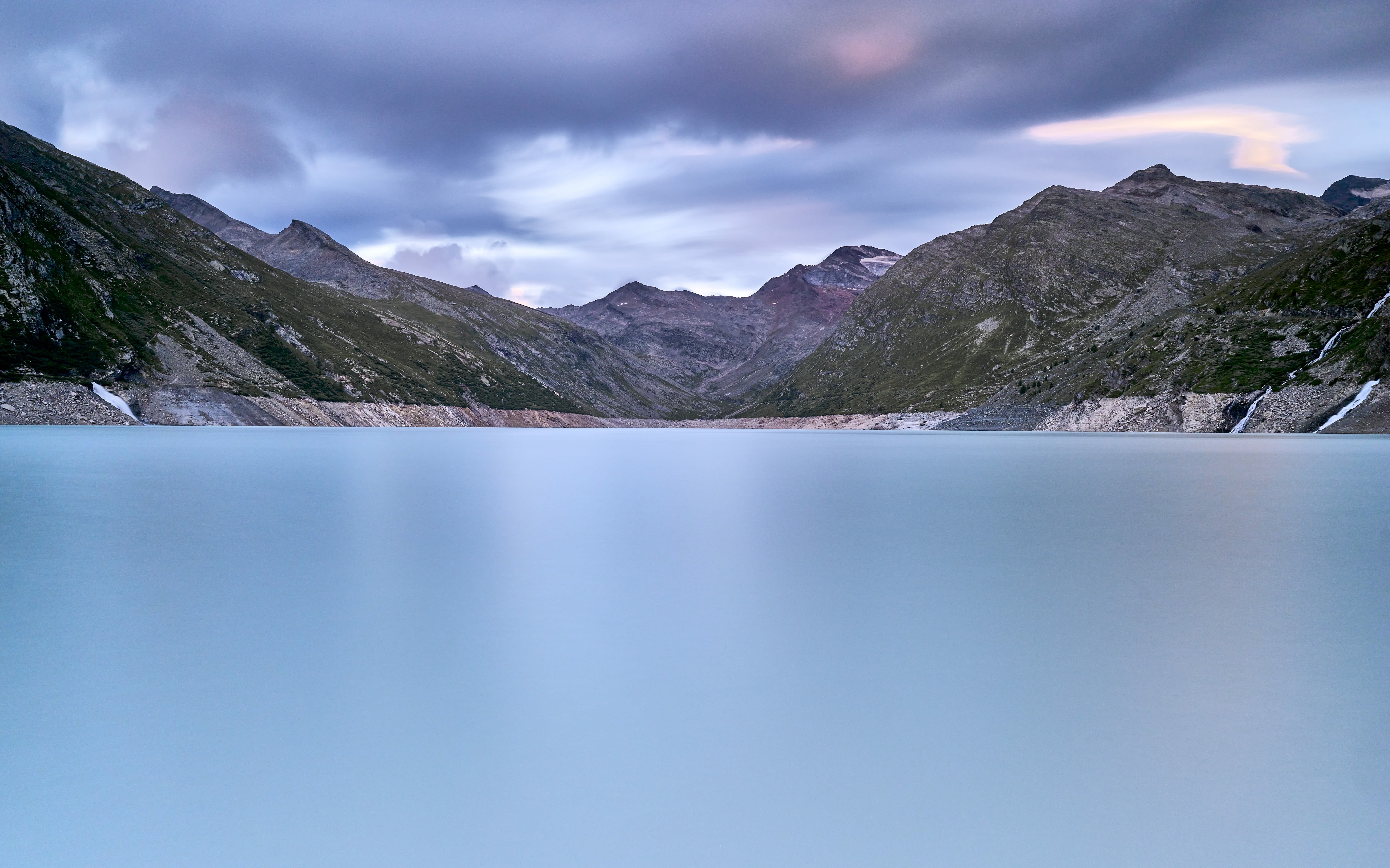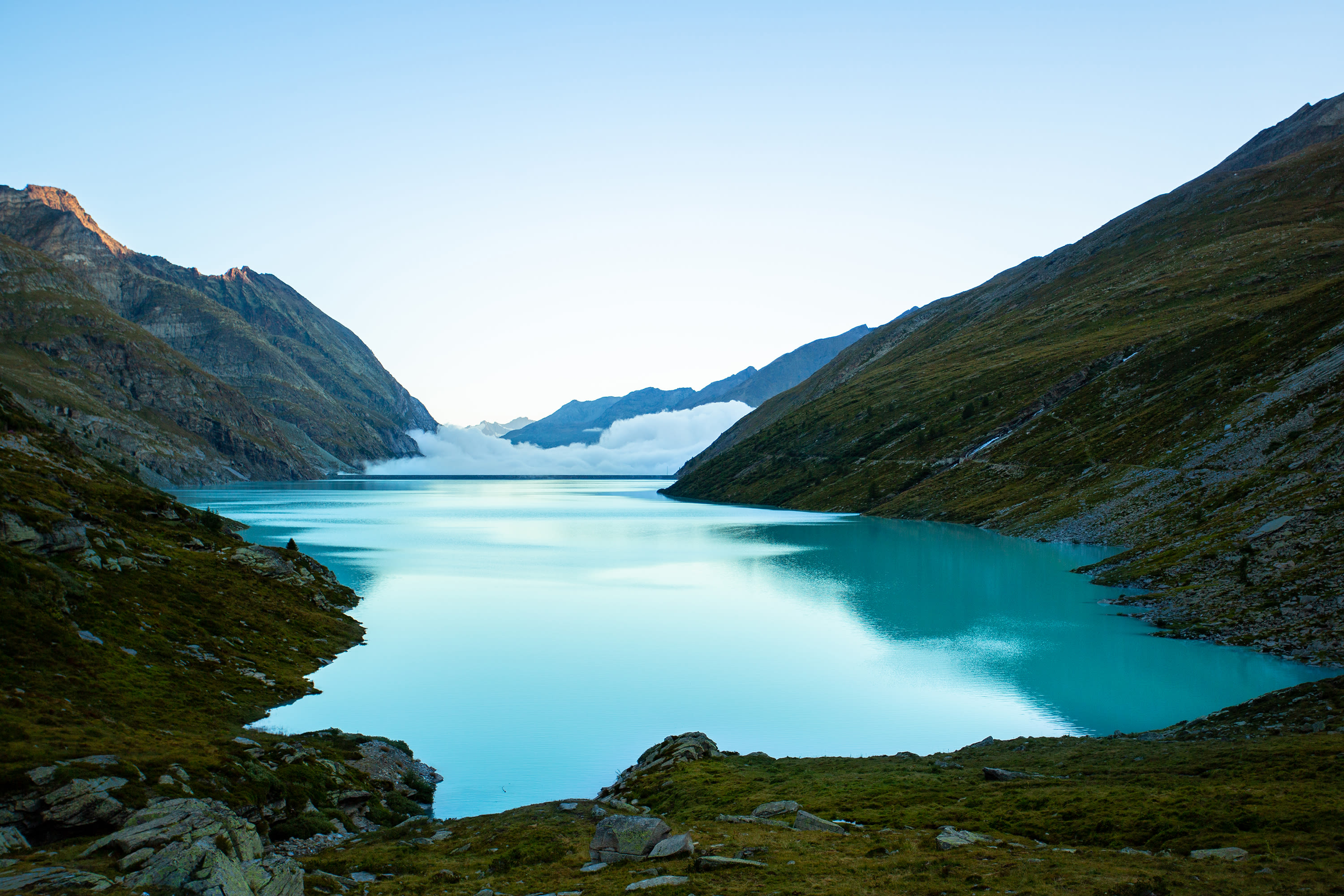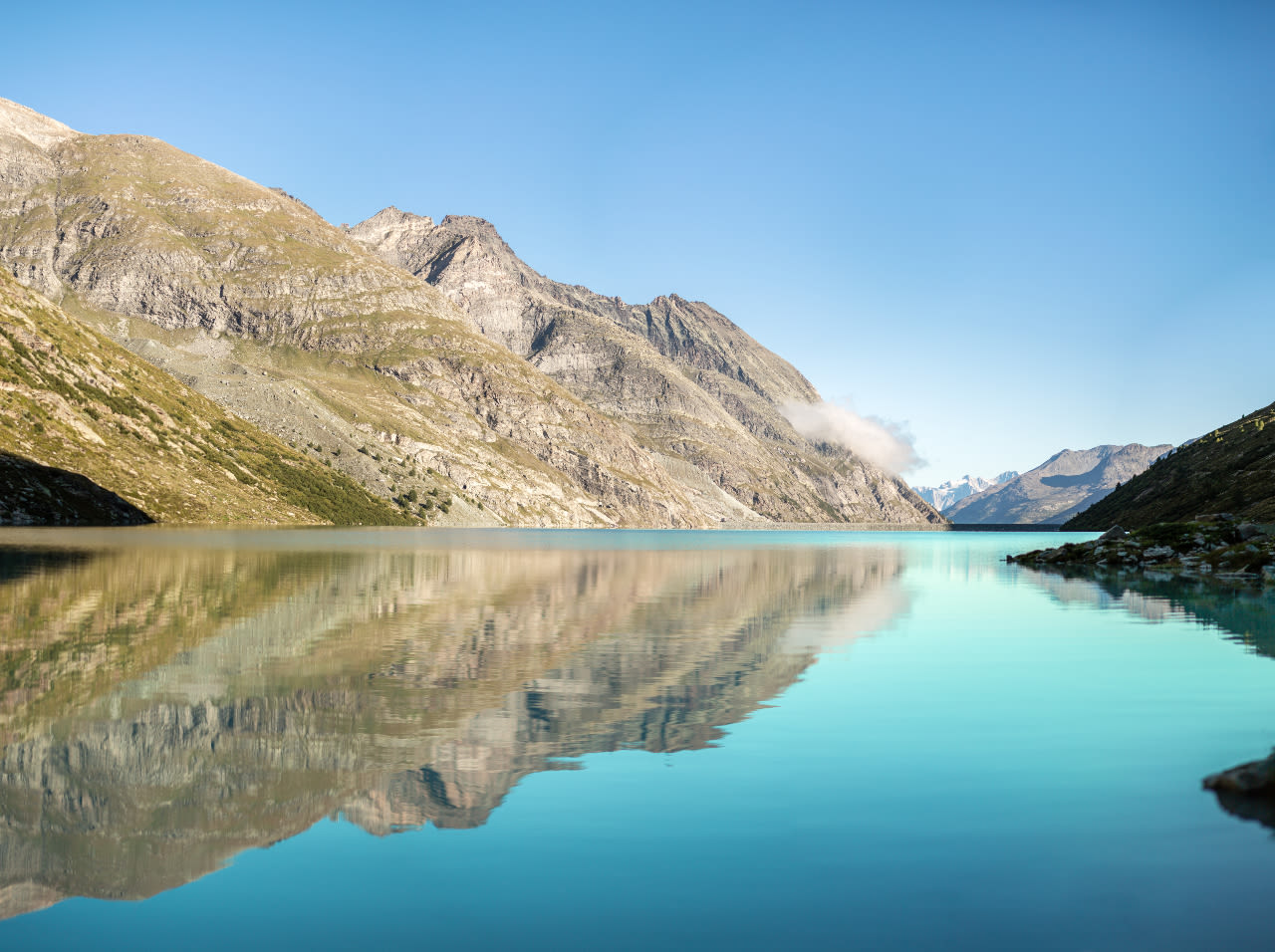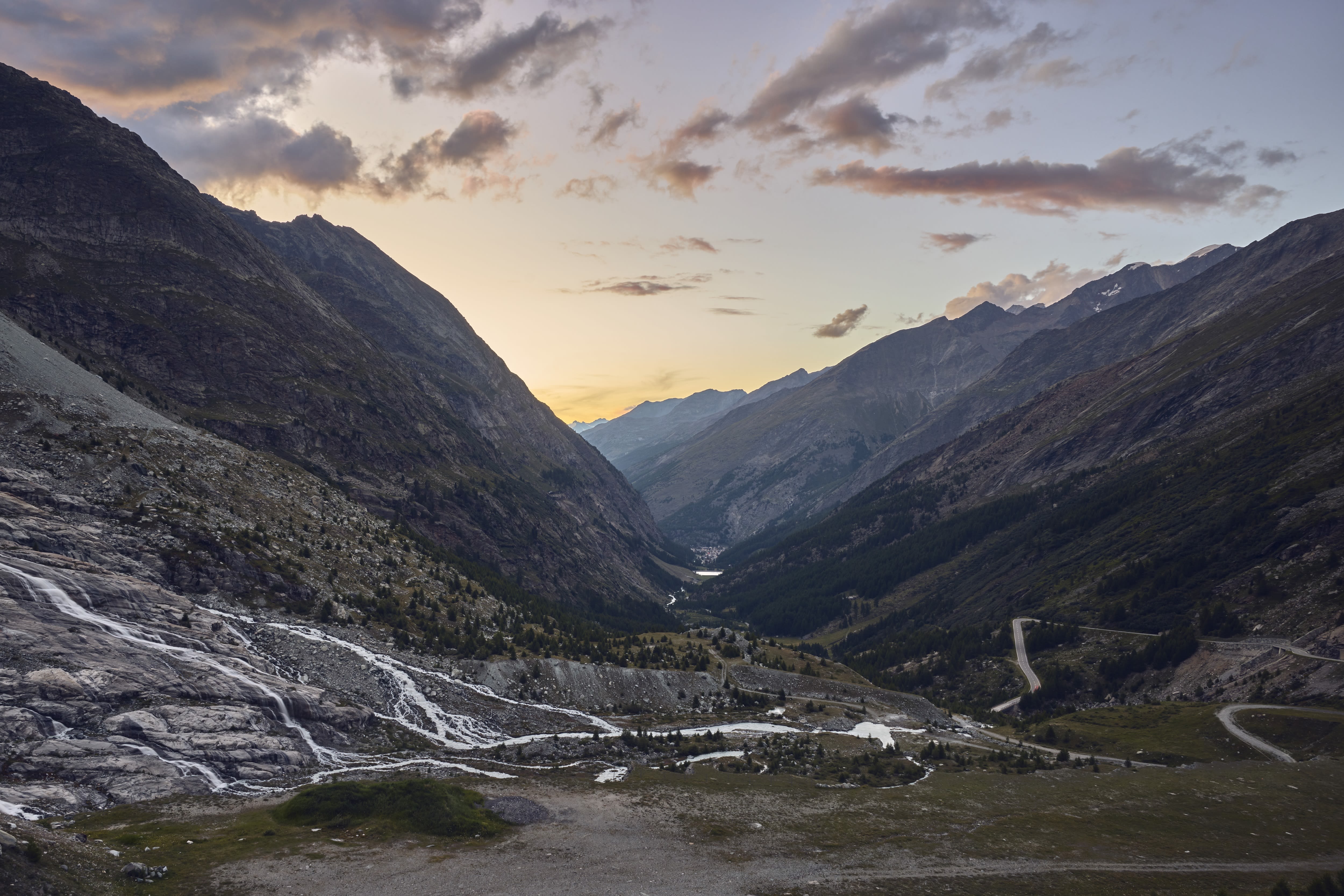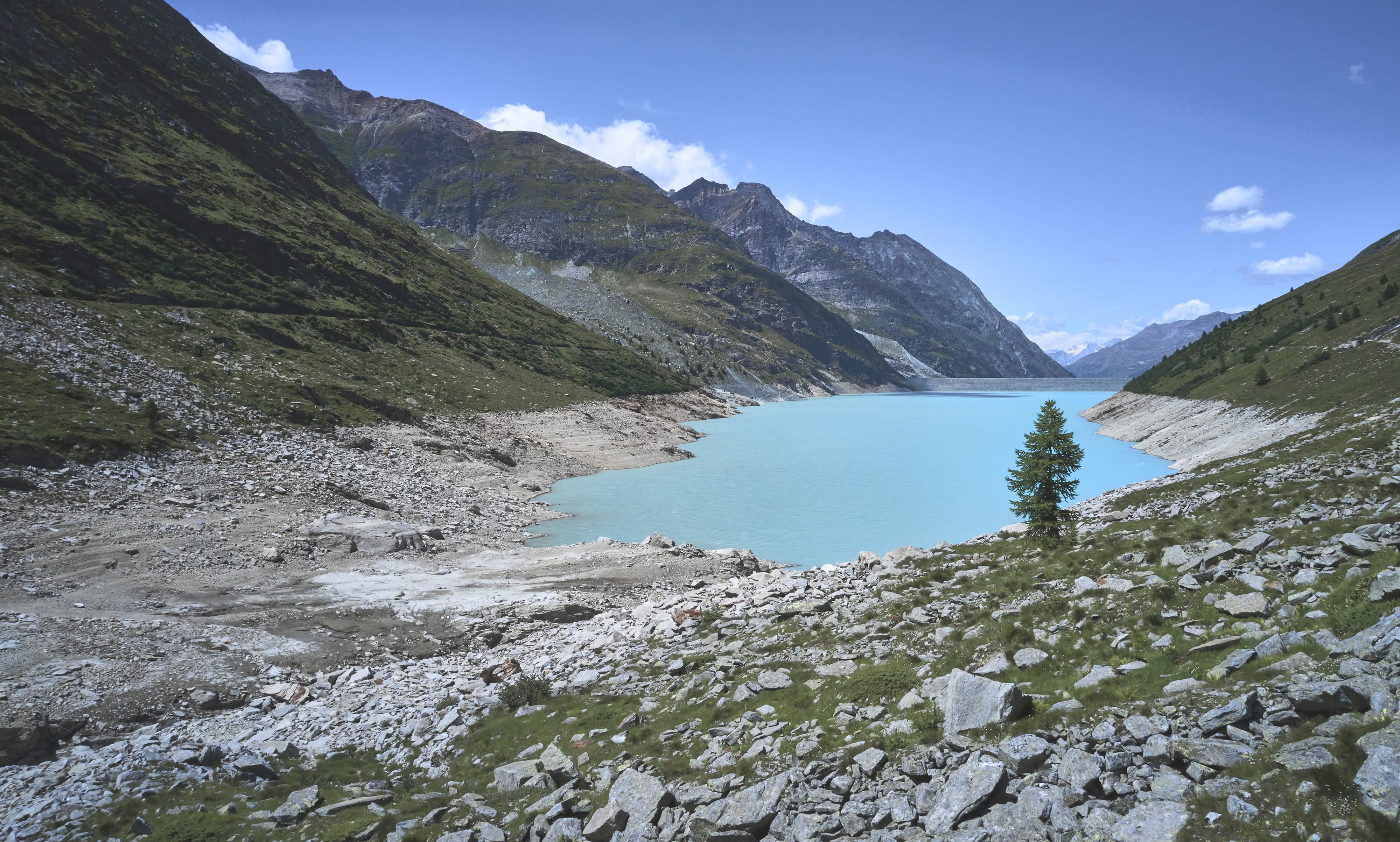South in the Saas Valley is the largest earth dam in Europe, the Mattmark Dam. The dam, which is used to generate electricity, is a popular destination for excursions, fascinating for its technical details and wild and romantic location.
PostBus trips are included from the 1st night with the SaastalCard!
Arrival
Reach the Mattmark reservoir easily by post bus and car from Saas-Almagell.
| PostBus | Car |
From 14 June to 20 October 2025, the Postbus will be running to Mattmark. | Parking costs: 1h = CHF 1 | 2h = CHF 2 | 3h = CHF 3 | 4h = CHF 4 | From 4 hours to 24 hours = CHF 5 |
Kraftwerke Mattmark AG
Except for the Zermeiggern pumping station, the facilities of Kraftwerke Mattmark AG were built between 1958 and 1966. The Zermeiggern pumping station was built between 1983 and 1987 after the advance of the Allalin glacier destroyed some of the water catchments below the glacier, making it impossible for the glacier streams to flow into the Mattmark reservoir. With the first full damming in 1969, the Mattmark reservoir was handed over to commercial power plant operation. It held 100 million m3 of water and was built for the sole purpose of generating electricity. In 2001, the Mattmark dam was converted into a multi-purpose reservoir to protect the underlying Saas Valley and the Rhone Valley, based on the findings from the floods in the 1990s. From this point on, the canton of Valais has a flood retention volume of 3.6 million m3 at its disposal in Mattmark.
In addition to the natural catchment area of 37.1 km2, the left- and right-bank side streams of the Saas Vispa with a catchment area of 51.1 km2 are fed into the Mattmark reservoir. The catchment area is 45% glaciated.
The water stored in the Mattmark reservoir is used in the two power plants, Zermeiggern (Saas-Almagell) and Stalden, over a maximum head of 459 m for the Mattmark-Zermeiggern stage and 1029 m for the Zermeiggern-Stalden stage. The inflows from the intermediate catchment area of 74.2 km2, which are stored in the Zermeiggern equalisation basin, can be turbined in the Stalden cavern control centre and pumped into the Mattmark reservoir through the Zermeiggern pumps. The Saas-Fee power station with the Feevispa water intake is used exclusively for doping the Saas Vispa.
The average annual production is 649 million kWh, of which 298 million kWh are generated in the winter half-year and 351 million kWh in the summer half-year.

